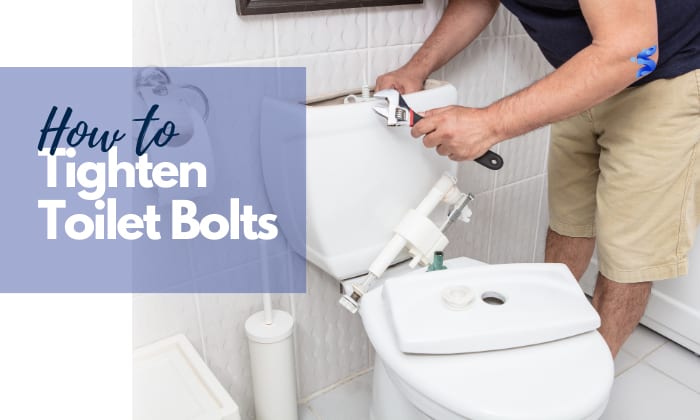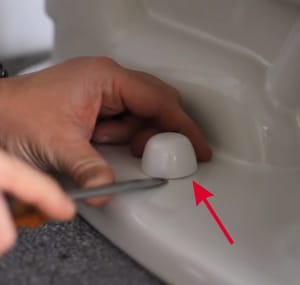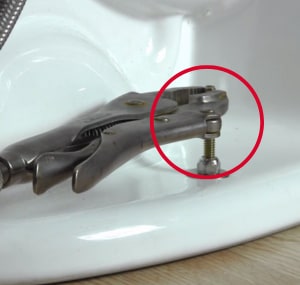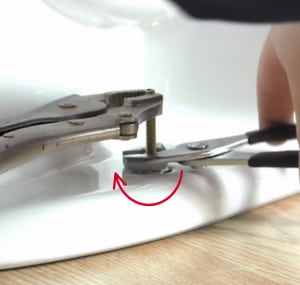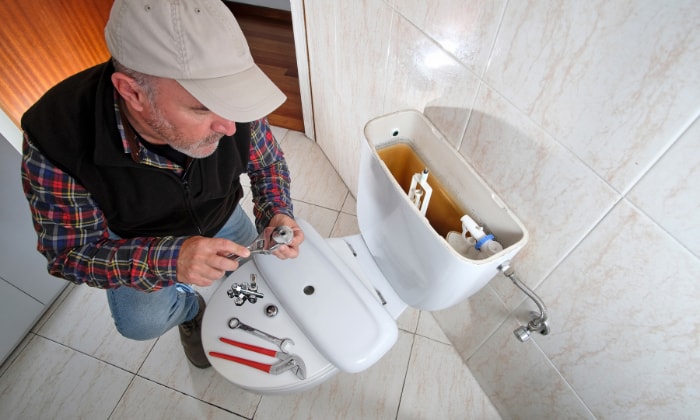Having a loose, rocky toilet is definitely worrying, as the fixture could break or leak with just one wrong move. It surely is a must to fix the problem as soon as possible.
In fixing a loose toilet, you’ll need to identify the reason it became detached. Most often, a loose bolt is the culprit behind your wobbly potty.
By knowing how to tighten toilet bolts preemptively, you can avoid the sanitation hazards of a rocking toilet as well as additional expenses if leaks occur.
Read on to learn how to tighten toilet seat with hidden bolts, or even those with exposed ones, so you can get back to your bathroom schedules with ease.
Table of Contents
Steps to Tighten Toilet Bolts
Here are some of the materials and tool to tighten toilet tank bolts that you may need to prepare:
- Penetrating oil
- Wrench
- Pliers
- Vise grips
- Flathead screwdriver or putty knife (optional)
Step 1: Remove bolt cap
Oftentimes, caps are used to hide bolts and give a finished look to the toilet. You will need to remove these decorative covers before starting to tighten toilet seat with hidden bolts.
Start by using a flathead screwdriver or a putty knife to pop off the bolt caps.
Step 2: Apply oil around the bolts
Once the loose toilet bolts are exposed, apply a few drops of penetrating oil around them. Let the oil sit for at least 15 minutes or up to 3 to 4 hours to allow it to work.
Applying oil protects your bolts and nuts from rusting. Without this step, rust can damage these parts and may leave you with no choice but to replace them soon.
Step 3: Secure bolts with pliers
After oiling around the area of the nut and bolts, use pliers or vise grips to secure their top section. Avoid twisting the pliers or vise as this can strip the bolts. Toilet seat bolts won’t stay tight if there is damage on their threads.
Step 4: Tighten gently and equally
Use a wrench to grasp and twist the nut carefully. Tighten a loose toilet bolt by applying slow and one-quarter turns at a time. Do this on both sides until you’re done.
But make sure not to over tighten any of the bolts and nuts, as this can cause cracks in the toilet flange or in the porcelain itself – which means more work and expenses needed.
The bolts and nuts don’t have to be very tight, so frequently check if the toilet is already stable after a few turns. Stop immediately when you no longer feel toilet bolts spinning.
What Causes Toilet Bolts to Loosen?
- Damaged toilet flange
When your toilet flange is bent or incurs any damage, it loses grip over the toilet bolts, so the toilet moves side to side. If tightening the bolts does not fix the issue, the flange ring may need replacement.
- Wear and tear, temperature change, and settling of the house
All these factors contribute to the loosening of nuts and bolts over time. Check if they can be fixed by retightening.
- Overtightening
Excessively tightening the bolts and nuts can cause damage to them or the toilet itself. Stripped and loose bolts are no longer efficient in holding the toilet in place.
When Should I Replace the?
Basically, when the bolts are already stripped or damaged, they can not be tightened anymore. If you see a toilet bolt loose from flange, the washers and nuts may not fit the bolt’s thread, especially if the flange is fine.
In this case, the washer and nuts should be replaced with new ones so you can secure a toilet to the floor.
However, in the case of stripped bolts, here’s a brief procedure to replace them:
- Cut off the toilet’s water supply and remove all excess water from the bowl.
- Remove the nuts or cut off the damaged toilet bolts from the base using bolt cutters.
- Proceed to remove the whole toilet so that you can see the flange. Cover the sewer pipe with rags to minimize unpleasant smells.
- Scrape off the old wax ring left on the floor using a putty knife or any scraping tool so that you can easily install the replacement later. Clean the wax off the bottom of the toilet bowl as well.
- You should clearly see the toilet flange by now. Slide the old bolts out of their slots to remove them. Then install new brass fasteners instead of replacing your old ones with plastic bolts.
- Install your new wax ring and remove the rag you placed earlier. You may now carefully attach a toilet to the floor.
- Tighten toilet to floor by securing the new bolts with a couple of nuts. Do not over-tighten to avoid cracking your toilet.
- Make sure that the toilet is secure by putting weight on it evenly. Do the opposite of the first step by turning on the water supply. The toilet should flush normally without leaks. Hopefully after this, you are able to fix a wobbly toilet.
Conclusion
As long as you are able to repair it early, it will be a breeze to tighten a loose toilet bolt. Do not let it sit for some time, as it can worsen and may require expensive and labor-intensive replacements.
Now that you have a better idea on how to tighten toilet bolts, you won’t have to worry about your toilet leaking or breaking as it wobbles – all you need is some drops of oil and a few turns of the wrench.

I’m Paulk Webb, and I work as a writer for Saveourwaterrebates. I’m happy to put in the time and effort to conduct market research to identify the most pressing issues faced by households concerning their plumbing. Feel free to check out our guides to get the most informed recommendations for how to solve your problems.


